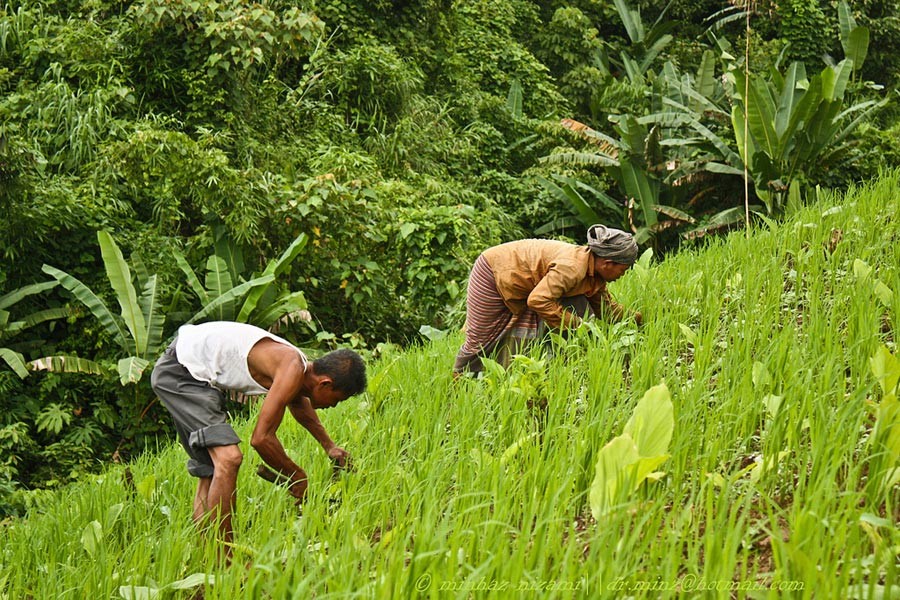Bumper production of paddy has brought smiles to the faces of jhum farmers in Rangamati district this year, thanks to the timely rainfall and favourable weather.
During a recent visit to jhum cultivation areas, one correspondent saw that the indigenous jhum farmers were busy harvesting Aus paddy from hill slopes.
Jhum cultivation is common in the district as it is a traditional method of farming on hill slopes. The farmers cultivate paddy, vegetables and other crops following the traditional method. They do not need to plough the topsoil and use any pesticides.
At first, the farmers cut the jungles and burnt those to ashes for preparing the topsoil for cultivation during the Bangla months of Falgun and Chaitra.
During the months of Baishakh and Jaishtha, they made holes on the slopes and sow seeds of paddy, pumpkin, cotton, sesame, maize, vegetables and other crops in the same holes.
Officials at the Department of Agriculture Extension (DAE) encouraged the jhum farmers to cultivate high-yielding paddy and vegetables on their lands.
Shantimoy Chakma, an agriculture official, said this year, a total of 5090 hectares of land were brought under jhum cultivation and the farmers are overwhelmed with bumper production of paddy and other crops due to favourable weather and timely rainfall, according to a UNB report.
After the harvest, the farmers here will celebrate 'Nabanno Utshob', said DAE deputy director Paban Kumar Chakma.


